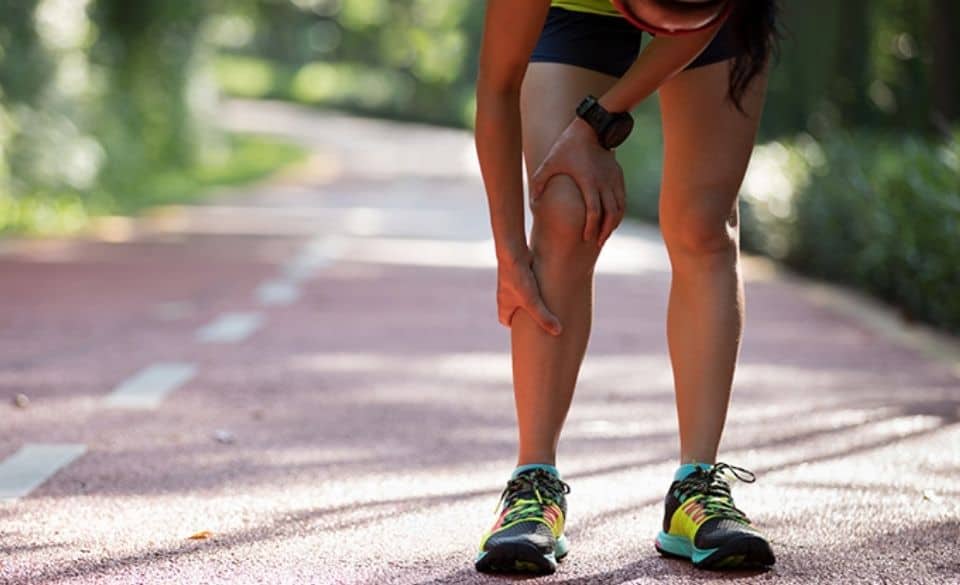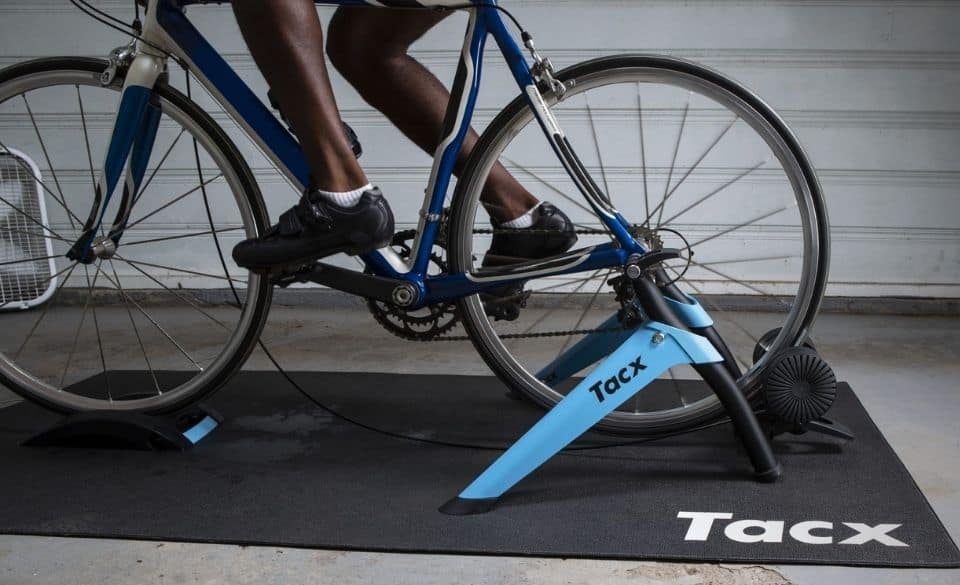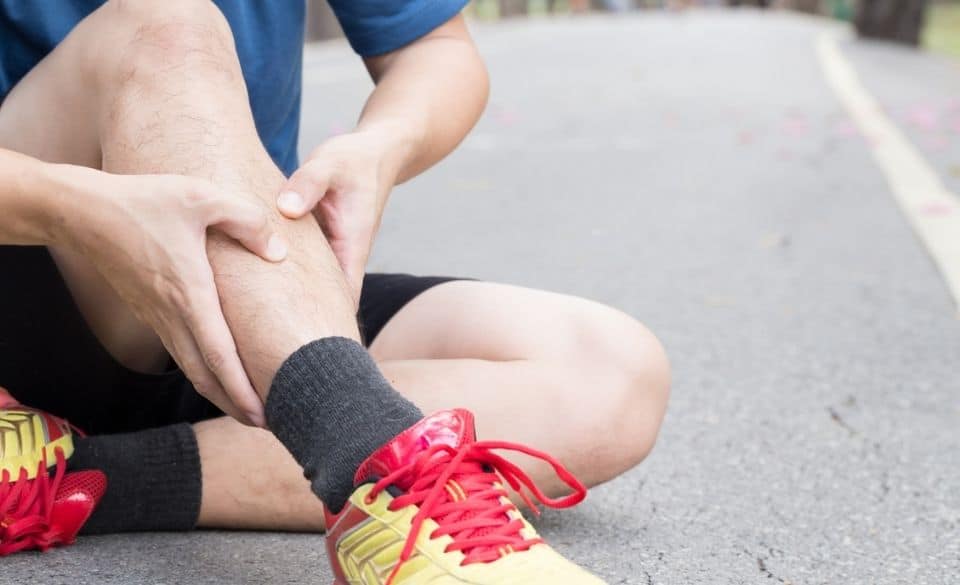
Can You Cycle With Shin Splints? Replacing Running With Cycling
Page Contents
Can You Cycle With Shin Splints?
One of the most common running injuries a runner faces in their training. Shin splints affect more than 30% of runners each year.
Inflexible lower leg muscles and fatigue is often the root cause of shin splints. So many runners tend to take up cycling as a form of rehabilitation during this period.
So the question begs, can you cycle with shin splints? And is it safe for the runner to use cycling as a form of rehabilitation?
A quick answer is yes!
Although shin splints (tibial stress syndrome) can be often painful and exacerbated by running and jumping, other sports such as cycling can still be performed without any serious pain.
Shin splints are caused by worn-out shoes, lack of cushioning, over-pronation or running on hard surfaces. If none of these are the cause, then it’s usually from overuse.
Overuse of the surrounding muscles causes small tears in the lower leg muscles. So, by eliminating running on hard surfaces and taking a break from running, you can help speed up the recovery.
That is where cycling can play a role in your recovery. Cycling is a non-impact exercise that doesn’t load the tibia region with added stress. So replacing your runs with cycling can not only help you reduce the pressure on the surrounding muscles but keep the fitness you have built up.
However, you still may suffer from slight discomfort when pedaling, and if that is the case, the next step is to strap the leg to help relieve the pain.
Is Cycling Bad For Shin Splints?
Since shin splints are often caused by overloading the lower leg muscles, replacing running with a low-impact form of exercise helps the tibia heal. As long as cycling doesn’t cause any discomfort, it is a great way to keep active while resting from running.
Alternatively, swimming is another form of low-impact exercising that can be alternated with cycling to prevent the injury from worsening while still helping you maintain fitness.

Will Cycling Make Shin Splints Worse?
As long as you follow the instructions below on how to wrap a leg for shin splits, and keep the intensity low, cycling will not make shin splints worse.
Once you decide to replace running with cycling, it is important to keep the force on the pedals low. Doing so will help relieve any pressure on the tibia and surrounding muscles.
Riding at a low cadence with high force will likely cause you some discomfort but ultimately won’t make your shin splints worse. But it is important to take this into account when using cycling as a form of recovery.
Remember recovering from an injury requires less stress on the area affected, so doing anything that causes discomfort or pain won’t help the injury heal any faster.
How To Wrap A Leg For Shin Splints?
Whether your planning to replace running with cycling or try to continue to run, wrapping the leg can help relieve any discomfort you may have. The following video gives a good description of how to tape your legs. Although there are many variations, the below video is one of the most effective ways to show you how to wrap a leg for shin splints.
Wrapping the leg from the ankle to just below the knee will lower the pain caused by shin splints. Wrapping the leg in this way will help to absorb the stress while running and help separate the enlarged muscle from the pushing on the bone. Although this isn’t a quick fix, it will help lessen the pain.
Unfortunately, the recovery can take up to six weeks to fully heal, meaning you might have to forgo running for this period.
As we said above, if you are replacing running with cycling, taping the shins can help relieve any pressure you may have when cycling.
Although it won’t be as direct or as sore when you run, you may still experience some form of discomfort when cycling. So using tape as a precautionary measure is a good way to ease any pain you may experience when cycling.

Shin Splints From Indoor Cycling – Can This Occur?
If you are experiencing shin pain similar to shin splints during indoor cycling or cycling in general, you are most likely experiencing another type of injury. Either way, if you are experiencing shin pain while cycling, it usually has to do with your saddle or cleat position.
The first step to relieving shin pain while cycling is to check your saddle height. Often a saddle that is too high will force you to reach for the pedals causing excess stress on the shin muscles and tibia.
Alternatively, a low saddle height can cause too much flexion in the shin muscles causing the same pain in the shins. To the beginner, this often feels like discomfort similar to that of shin splints.
By adjusting the cleat position further back and lowering your saddle will help relieve the discomfort. But first, check with a qualified bike fitter before making any major adjustments to your position.

Can Shin Splints Cause Bruising?
Whether you’re a novice runner or a seasoned professional, bruising can often occur on the shins. But is this caused by shin splits? And can shin splints cause bruising?
Luckily the symptoms of shin splints don’t include bruising. Bruised shins are usually caused by impact stress, microscopic blood vessel tears, fractures, ripped tendons, or muscles. So if you are experiencing bruised shins with the symptoms of shin splints, you most likely have a stress fracture or something else.
If this is the case, it is wise to go see a sports doctor first to get a diagnosis as soon as possible. Hopefully this article gives you some basic insight and answer you question – Can You Cycle With Shin Splints?


Download Running the Mile for only 8usd
“A Know-all Short Report All About Long Distance Running”




